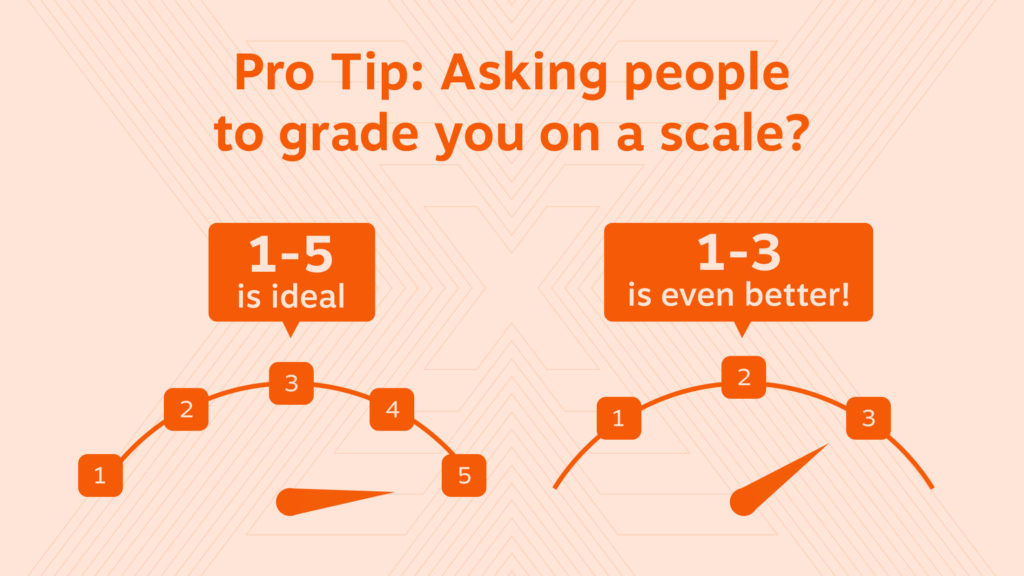Here are the latest insights from customer service consultant and bestselling author Micah Solomon…
There’s one type of interaction with customers that tends to be a hot mess: customer surveys (and the verbiage that’s sent out to accompany them).
Sending out poorly designed surveys can…
…waste the time of businesses and customers alike
…alienate (or at least irritate) even your most loyal customers
…mislead you with spurious results
Designed and deployed properly, however, surveys can reveal a lot about how customers view their experience while also treating respondents(and those who choose to not respond!) with respect. So I encourage you to spend a couple minutes with me now learning the do’s and don’ts of customer surveying.

Twelve Essentials of Effective Customer Experience Surveys
1. Every survey question should be clearly worded and easy to answer, not requiring your customer to do math or think too much about the inner workings of your company or industry. (Avoid anything along the lines of “Compare this interaction with interactions you’ve had at similar departments at other fintech companies in our broadly competitive cohort.” And don’t ask questions you don’t care about and know you’ll never act on.
2. Don’t ask your customers to grade you on a scale of 1-10, or, even worse, 0-10. If you ask for ratings on a scale of 1-10 or 0-10, what in the world are you thinking? There’s no customer on the planet who can determine the difference between a “6” and an “8” when filling out such a beast. My belief is that five choices is the maximum you should ever offer; three is even better.
3. The order in which you ask your questions matters. A lot. Be sure to ask for your customer’s overall impression first. You don’t want to influence how a customer answers this central answer by asking your more nitpicky questions first; asking several individual questions and only then getting around to asking for an overall rating will color that overall rating significantly.
Think about it like this: If the question they encounter just before the overall question is about the cleanliness of your restrooms, and they feel those were just so-so, then they’re likely to reduce their overall rating of you as well (since you have their minds in the toilets); if you asked about availability of parking and they answer that that was abundant, it’s likely to artificially increase it (since you’ve got them thinking about something positive). This is why the most important question needs to go first.
4. Include at least one open-ended field, both to harvest customer insights and to let customers know that you’re actually interested in their thoughts and insights.
5. Word choice matters. I’m a fan of emotive answer choices, like “Fantastic!” (for your top score) and “Sketchy!” or even “Dreadful!” (for your lowest). Note: Such creative response options need to be consonant with your brand style to work. They won’t be appropriate for a formal company or one in a life-and-death industry like healthcare.)
6. Pay at least as much attention to the number of top ratings (especially on your first, most general question) as to your overall average satisfaction score. That’s because this top number is the best representation of how many true loyalists—or, at least, customers who are well on their way to true loyalty—you have.
7. If your survey is a long one, figure out a way to let customers stop mid-survey without getting scolded (and then invalidated) for the questions they didn’t get to.
8. Don’t ask intrusive demographic questions (such as income, gender, or age) without making the questions optional. Don’t be so vainglorious as to assume that respondents will actually trust your privacy practices.
Also, unless you’re a casino operator, professional pornographer, cannabis dispenser, or someone otherwise limited by law to serving adults (or if you’re in healthcare, banking, or another highly regulated field), there’s no reason to ask for a complete birthdate including year of birth.
(If you’re trying to be cute and set yourself up to later send out birthday cards, please at least stop asking for the year of birth; a complete birthdate is a. none of your business and b. makes identity theft all too easy in case of a breach.)
9. Scan your survey responses right away for any complaints or ultra-low scores. Then respond personally and immediately to these upset customers, even before you do any review or analysis on the entire batch.
10. Send a personal thank-you note (email is fine) to anyone who gave you a compliment in a free-form field. Again, do this as promptly as possible.
11. Pay attention to the comments with which you introduce the survey and the survey request. These should be friendly, gracious, and brand appropriate. That way, whether or not the recipient chooses to respond, they’ll get a positive impression.
12. Don’t hound people who don’t respond to your survey mailings. I would make a single follow-up reminder the limit (or even zero follow-ups, though I know that’s hard to stick to). And, once you’ve surveyed a particular customer, suppress future surveys for at least 30 days.
Want even more help with surveys? Nextiva has built-in survey capability. Talk to an expert today.

















 Customer Experience
Customer Experience 







